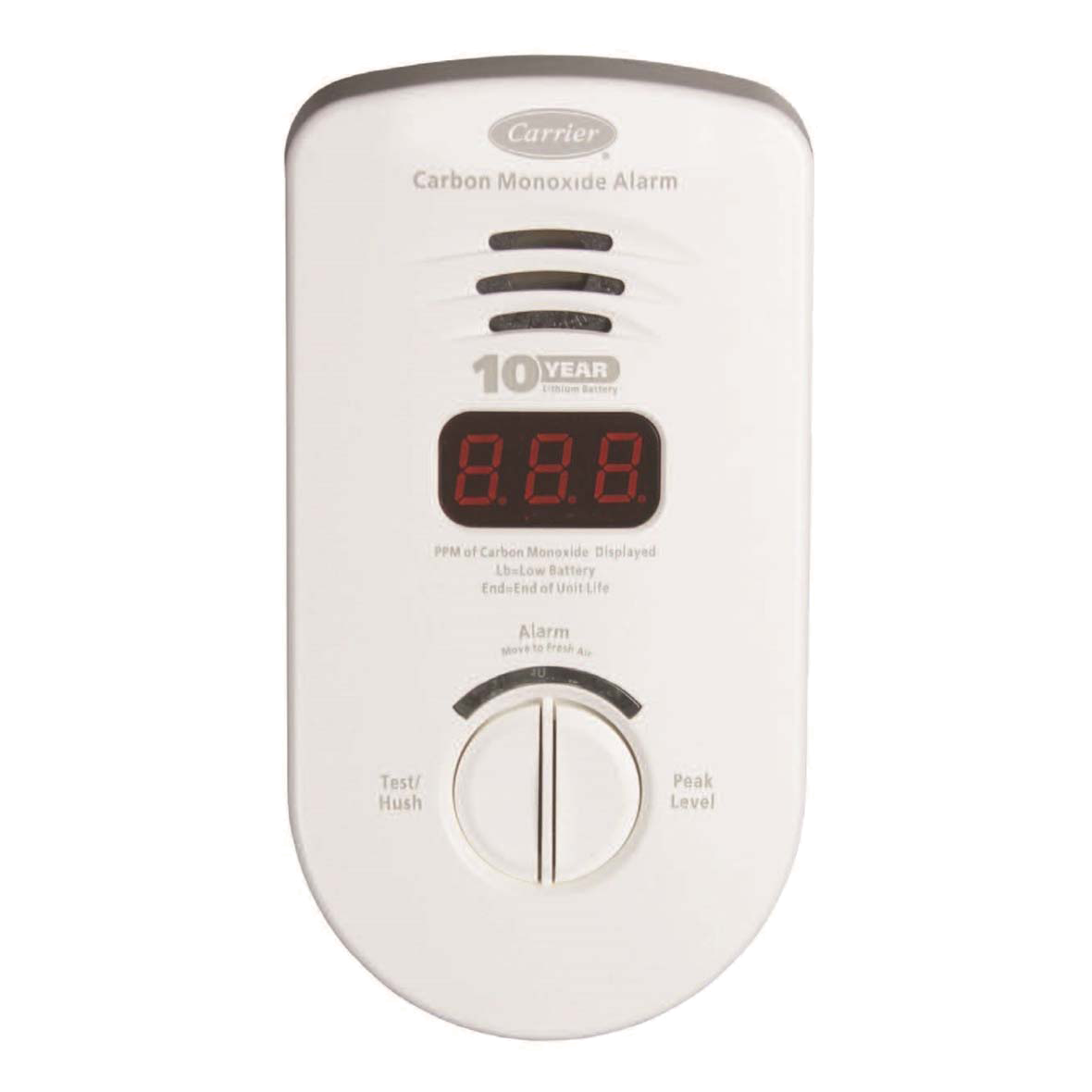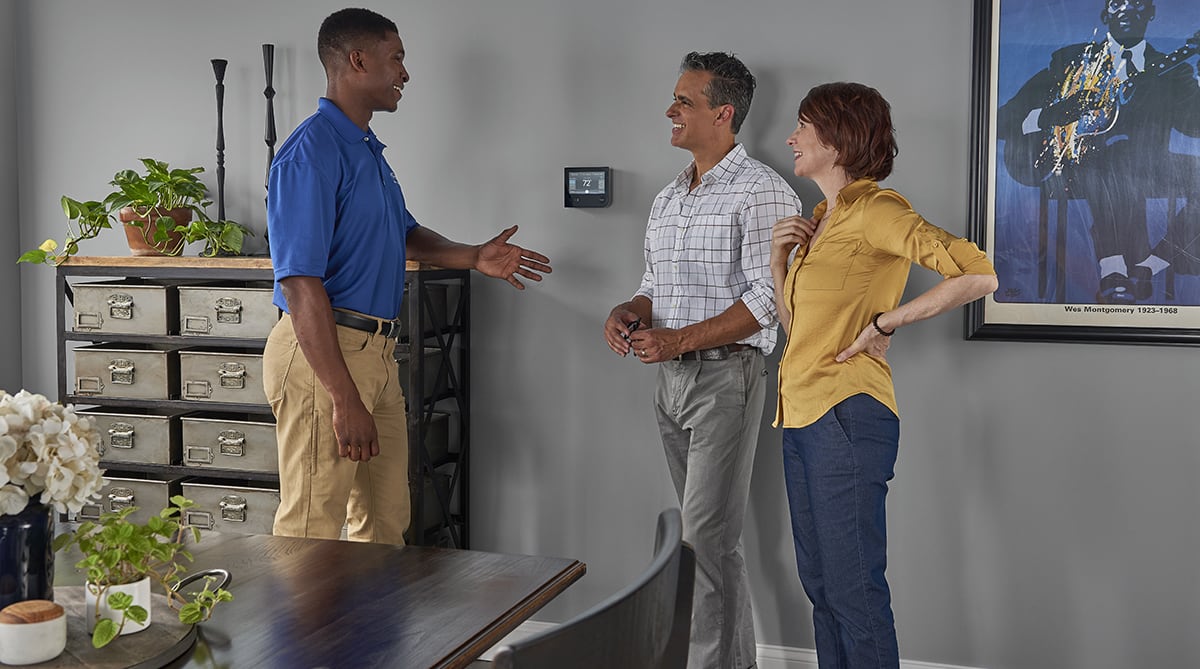
Carbon Monoxide (CO) Alarm
Designed to alert you when dangerous levels of carbon monoxide are present inside your home.
Carbon Monoxide Alarm Overview
Carbon monoxide is a colorless, tasteless, odorless and highly toxic gas. The Carrier® CO alarm uses sophisticated sensor technology to detect and record levels of CO.
You can monitor the current CO level in your home on a large, easy-to-read digital display. When dangerous levels of CO are present, a loud, audible alarm alerts you and your family automatically.
WHY THIS CARBON MONOXIDE DETECTOR IS RIGHT FOR YOU
Monitors CO levels updating every 15 seconds.
When activated, the alarm makes a loud pulsating sound at 85 decibels.
Plugs into any standard electrical outlet and Lithium ion backup battery.
10-year parts limited warranty.1

What Should I Consider When Buying a Carbon Monoxide Alarm?
- Battery life: Considering how long a carbon monoxide detector battery lasts is crucial for ensuring continuous protection against the invisible, odorless gas, which can be life-threatening if undetected. Selecting a CO Alarm that plugs into a standard electrical outlet and also contains a battery backup can help ensure ongoing carbon monoxide detection.
- Price: It's important to consider the cost of a carbon monoxide alarm to ensure you can afford a reliable model that effectively protects against carbon monoxide poisoning. Balancing cost with quality ensures you get a detector that is both effective and within your budget, safeguarding your health without financial strain.
- Sensitivity: Considering how many ppm it takes to set off a carbon monoxide alarm is vital to ensure it triggers an alarm at safe levels, preventing exposure to harmful concentrations of the gas. This threshold determines the detector's effectiveness in providing timely warnings, thereby protecting health and safety.
- Sound: It's important to consider what the carbon monoxide alarm sounds like to ensure it is distinct and loud enough to alert you promptly, even during sleep or from a distance. A clear and recognizable alarm sound is crucial for immediate action to prevent carbon monoxide poisoning.
- Power Source: Considering the power source of a carbon monoxide detector is crucial for ensuring it remains operational during power outages or when batteries run low. Reliable power sources can improve the detector's ability to provide continuous protection against carbon monoxide exposure.
- Design & Display: It's important to consider the design and display features of a carbon monoxide alarm for ease of use and quick readability of carbon monoxide levels. An intuitive design and clear display can enhance user experience and ensure timely and accurate response to potential dangers.
- Installation: Considering the installation difficulty of carbon monoxide detectors is important to ensure they are set up correctly and promptly. Easy installation increases the likelihood of proper placement, improving the detector's effectiveness in providing safety from carbon monoxide exposure.
- Warranty: Considering the warranty of a carbon monoxide alarm is important to ensure long-term reliability and protection, providing peace of mind that the device will be repaired or replaced if it malfunctions. A good warranty reflects the manufacturer's confidence in the product's durability and performance.
- Brand reputation: It's important to consider the reputation of the carbon monoxide alarm manufacturer to ensure you are purchasing a reliable and high-quality product. A reputable manufacturer like Carrier is more likely to produce alarms that meet safety standards and perform effectively in protecting against carbon monoxide exposure.
FAQS ABOUT CO DETECTORS
1To the original owner, when product is used in an owner-occupied residence, a 10-year parts limited warranty upon timely registration of your new equipment. Warranty period is 5 years if not registered within 90 days. Jurisdictions where warranty benefits cannot be conditioned on registration will automatically receive a 10-year parts limited warranty. See warranty certificate for complete details.


